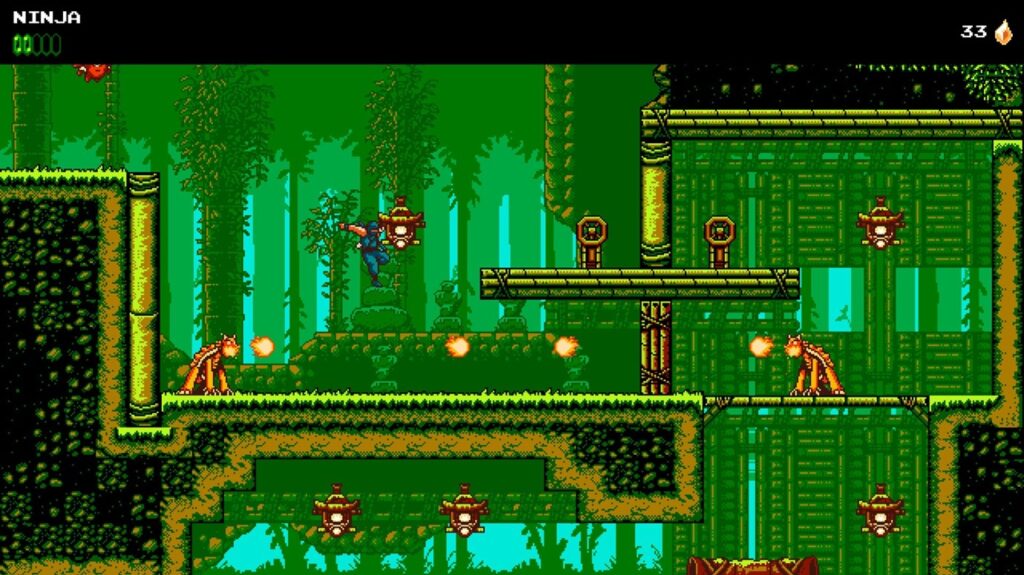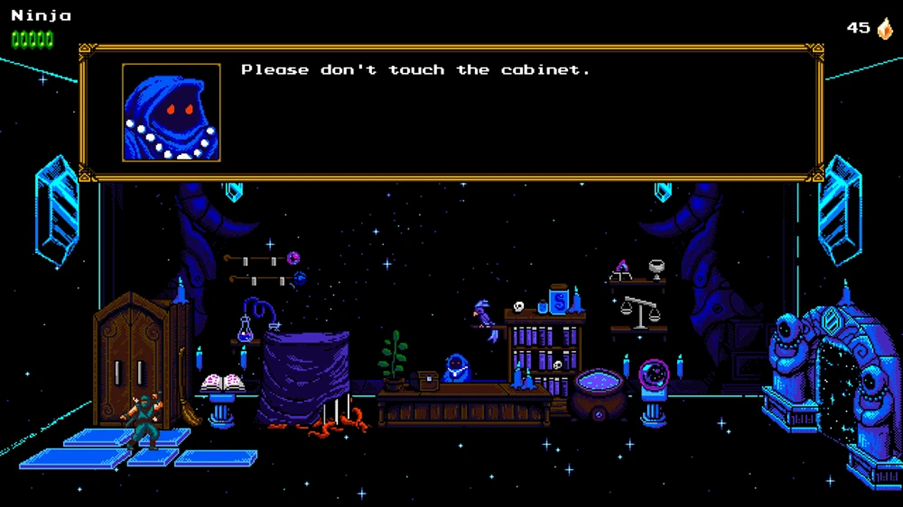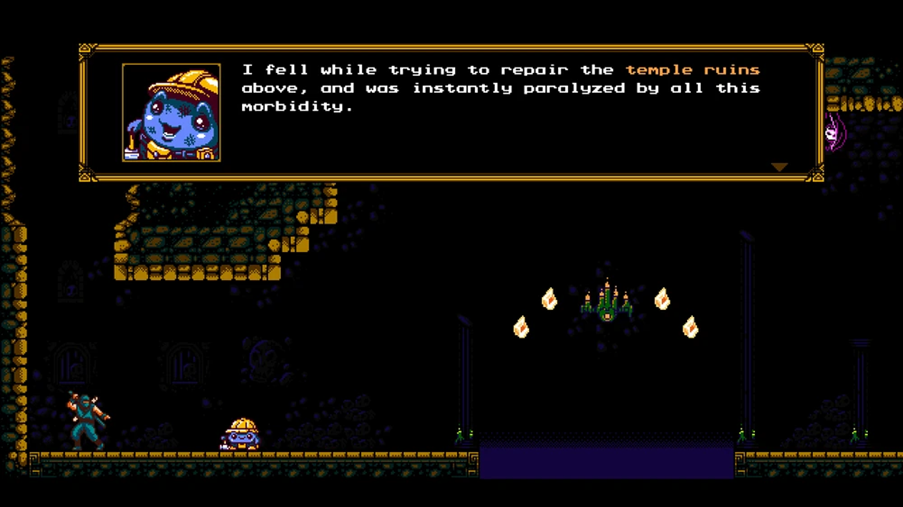Intro –
I was always a huge fan of 2D side-scrolling games. My affinity for them dates back to my very first video game, Sonic CD, debatably the most controversial of the Sonic the Hedgehog classics due to being more based on exploration than the traditional speed-based gameplay the series became synonymous with. This came up when I was speaking with Mr. Wes a couple months ago before he left the school, where he mentioned his favorite indie side scroller on the Nintendo Switch – one that he thought was so worth playing that he went as far as to lend me his switch for a week so just so I could try it out. So, in honor of Mr. Wes, here is my review of Sabotage Studio’s “The Messenger”.
(Author’s note: It is worth noting that for the sake of this review I will be avoiding spoilers, as I truly believe it is a worthwhile experience to go into the game blind)
Review –
Right off the bat, the campaign introduces you to the game’s core mechanic – Cloudstepping. Performed by pressing jump immediately following an attack, the Cloudstep allows you to chain attacks and remain midair for an extended period of time, effectively granting the player an extra jump. While the amount of leverage you get off the Cloudstep depends on several factors such as momentum and positioning, its simple inputs, paired with the juxtaposition of its deceptively high skill ceiling, grants the game a newfound layer of accessibility.

The Ninja performing a Cloudstep in the Tutorial Stage.
Naturally, as a fundamental mechanic of the game, the rest of the game revolves around how well you use the Cloudstep. While more casual players could easily go through the first few levels without ever using the Cloudstep, players who have truly mastered the mechanic are rewarded with shortcuts and bonuses allowing them to reach hidden platforms and passageways that weren’t previously accessible. Not only does this reward practice with good level design, but it also creates new objectives for returning players, increasing the game’s replayability value.

Hmm…where does this route go?
Throughout the game, you get to meet various characters that reference different and you’re able to communicate with most of them through dialogue bubbles. With an impressive amount of dialogue trees, these little interactions do an immaculate job of fleshing out the in-game world of “The Messenger”, breathing life into each and every environment you visit. It is also notable that unlike many other games of its genre, it does not freeze gameplay, a simple change that goes a long way when you finally get to experience it.

This isn’t Narnia, trust me.
When it comes to the writing itself, the characters are given an insane amount of attention to detail, with a lot of thought being put into crafting each character’s own distinct personality. For example, every time you die, instead of getting a game-over screen like standard games, you get a unique message from a recurring character that encourages you to continue playing. This dynamic style of presentation is reminiscent of the death screen rants in Batman: Arkham Knight, so I’m really glad that it was incorporated into a retro environment rather than being relegated to a modern, triple-A title.

Well that’s a creative excuse for being stuck in an idle animation.
One thing that I really like about this game is the accuracy it provides when representing the 8-bit era of gaming. While most games of the time were evidently hindered by their graphical limitations, this game takes that concept and flips it onto a complete 180, embracing it as its own art style and identity. The game also takes a great advantage of the hardware boost, implementing various quality of life changes such as fps optimizations and widescreen support, as well as subtle visual touch-ups due to an increase in color palettes. Collectively, all of these small optimizations make the artwork exuberantly well rendered, giving each stage, environment and character a crisp and vibrant feel.

I’ll bet you Mario has never looked like this.
Unfortunately, the same cannot be said about the music. In “The Messenger”, each area has different versions of the track which you will hear depending on the “state” of the specific level (avoiding too much explanation due to spoilers), in a similar fashion to how Sonic CD has different tracks for the past, present and future versions of each stage. When it comes to the tracks themselves, most of the tunes were catchy enough to compliment the gameplay, but I found them hard to listen to after repeated runs of the same stage. While not really bad enough to take away from the overall experience, there are certain melodies or songs that I feel had their potential limited by their 8-bit sound design. If there was an option to listen to the original arrangements of the soundtrack, the. The sound mixing also isn’t perfect, requiring small adjustments to match the volume of the sound effects, though this may be a subjective issue rather than an objective one.
Conclusion –
Sabotage Studio’s “The Messenger” is a unique subversion of the side-scrolling platforming genre. Pulling inspiration from several classic retro video game icons, the game is a love-letter to all games of the 8-bit and 16-bit era, reminding us time and time again that you don’t need crazy effects or realistic graphics to have a good time.
Gameplay: 10/10
Writing: 10/10
Graphics: 10/10
Music: 8/10
Overall Rating: 9.5/10
